- Home
- Home
House Siding Comparisons for Coastal Homeowners
🏡 The Complete Contractor's Guide to House Siding Choices for Florida and Coastal Area Homes.
Your step-by-step guide to choosing siding that fits your style, neighborhood, and budget.
- Created by retired home improvement contractors with deep industry experience.
- Designed to help homeowners choose the ideal siding for their home by offering real-world advice and insights.
Florida homeowners face a unique set of challenges when it comes to selecting exterior house siding. The state’s combination of intense sun, high humidity, torrential rainfall, and powerful hurricanes demands siding materials that do far more than merely look attractive. The right siding solution can mean the difference between years of curb appeal and expensive, recurring repairs. As a siding contractor specializing in Florida and other coastal regions, our mission is to ensure you make an informed, savvy investment that will protect your home and property value for decades.
This comprehensive, contractor-level guide is designed to help Florida and coastal homeowners understand the strengths and trade-offs of the most common siding materials: vinyl, engineered wood (e.g., LP SmartSide), concrete board (e.g., Hardie Board fiber cement), and real wood. We’ll also guide you through the process of choosing a siding style, analyzing climate factors, understanding the cost breakdown, maintenance requirements, and—most importantly for Florida—how to ensure your siding meets strict building and wind-load codes.
Choosing the perfect siding for your home is more than just a design decision—it's a long-term investment in curb appeal, weather protection, and value.
This site is built to help homeowners confidently navigate the many options available and find the siding that fits their style, neighborhood, and budget.
Choosing a new house siding involves weighing factors like durability, maintenance, aesthetics, cost and climate suitability.
Below is an overview of some of the most common siding options, their pros and cons, and approximate materials costs based on current trends and data from various home improvement sources and the web.
Whether you’re looking to boost curb appeal, increase your home’s hurricane resilience, or simply want a beautiful, low-maintenance exterior, we’ll walk you through every vital consideration from contractor experience.
🔍 Step 1: Visualize Your Ideal Home Exterior
 Board and Batten Siding. Creative and stylish. One of the most popular house sidings.
Board and Batten Siding. Creative and stylish. One of the most popular house sidings.Board and Batten: A traditional yet increasingly popular choice, board and batten consists of wide vertical boards separated by narrow strips (battens) that conceal the seams. This style adds dimension and is favored for farmhouses, cottages, and modern homes alike. Both engineered wood and fiber cement (as well as real cedar) can achieve this look.
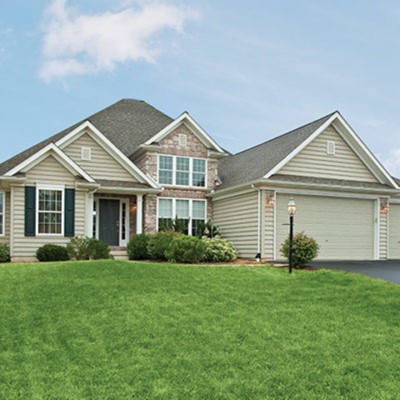 Classic Clapboard style Siding. It evokes a timeless, colonial, or craftsman look, one of the most popular styles.
Classic Clapboard style Siding. It evokes a timeless, colonial, or craftsman look, one of the most popular styles.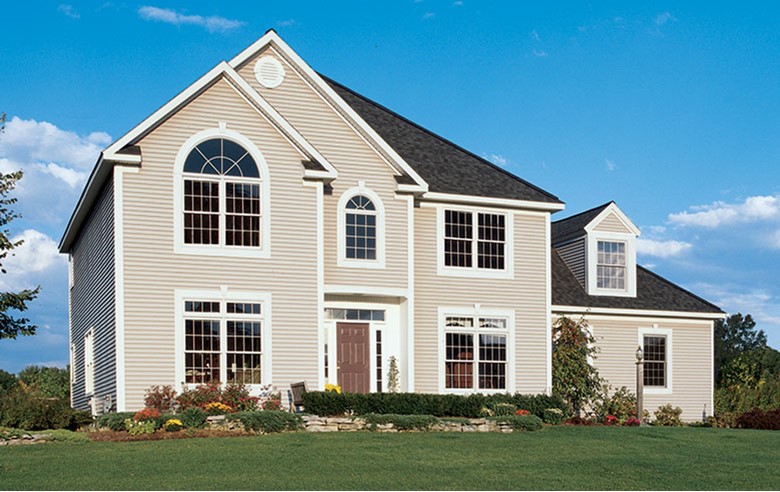 Wood Siding. Timeless, warm, authentic, natural beauty.
Wood Siding. Timeless, warm, authentic, natural beauty.Picture this: You pull into your driveway, glance at your home, and imagine how fresh and inviting it could look with the perfect siding. The right choice can make your house stand out for all the right reasons — boosting curb appeal, protecting it from the elements, and even saving you money on energy bills.
Imagine Your Dream Exterior ✨
Before you start comparing materials, take a moment to picture your ideal home:
- Do you want to blend in with your neighborhood’s timeless charm or stand out with a bold, modern look?
- Which colors, textures, and styles make you smile every time you see them?
- How much are you comfortable investing in this upgrade?
This vision will be your compass for every decision that follows.
Match Your Vision to the Right Material
Match Your Vision to the Right Material 🧱
Once you know the look you love, it’s time to explore the siding types that can bring it to life. Each has its own personality, strengths, and quirks:
Start by picking the look you love, then explore the materials that fit your style, climate, and budget.
Why Siding Matters More Than You Think
Why Siding Matters: It is the first thing people see when they drive by your house.
It is the first thing people see when they drive by your house. It creates an image of what other people think about your home.
Your siding isn’t just a shell — it’s your home’s first impression and its first line of defense. The right choice can add;
- Curb Appeal: Your siding is the first thing people notice, it makes or breaks a home's exterior vibe.
- Weather Protection: Acts as a shield aginst rain, snow, wind, heat, and even hurricanes.
- Energy Efficiency: Siding helps reduce energy bills by adding a thermal barrier.
- Resale Value: Quality home siding increases property value and buyer appeal.
Whether you're renovating or building new, this site will guide you through every step—from inspiration to installation—so you can make a confident, informed decision that suits your home and lifestyle
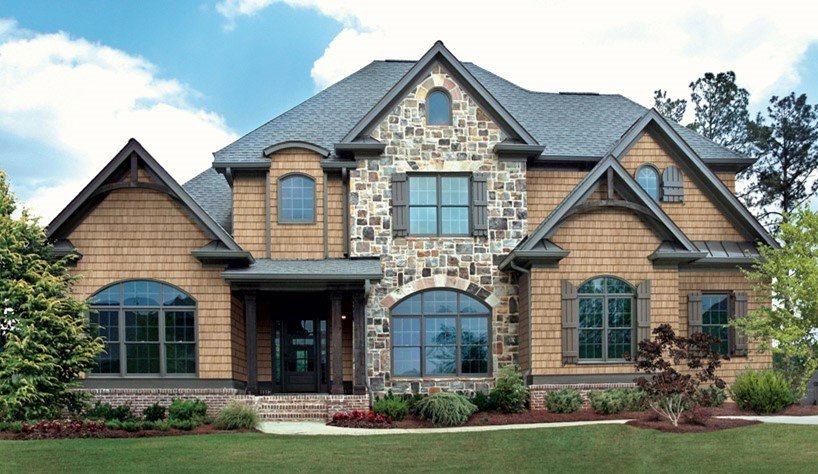 Cedar Shake Siding.
Cedar Shake Siding.Cedar Shake/Shingle: Cedar shakes (split) or shingles (sawn, more uniform) offer a naturally warm, textured effect reminiscent of historic Cape Cod and coastal homes. Today, shakes come not only in real cedar but also as engineered wood, fiber cement, and even vinyl—all able to replicate the look with lower maintenance demands.
What To Look For in a Siding
What to look for in a Siding. How to make your house look new again.
Elevate Your Home's Exterior with a Sididng that Lasts. Whether you're updating a beloved family home or building your dream house, choosing the right siding is more than just curb appeal-it's an investment in comofrt durability, and energy efficiency, and longevity.
You must consider all the following items before you actually go shopping for a new house siding.
Once you have carefully considered these items, going shopping for the best house siding will become a lot easier.
- Durability: Handles your local climae like a champ.
- Low Maintenance: Easy to clean and care for. Say goodby to painting, cracking or warping.
- Energy Efficient Materials: Reduce enegy bills, and enjoy year-round-comfort, and save money.
- Style Options: Textures, lengths, thicknesses, and colors. Endless options out there.
- Cost: Your budget considerations. How much do you want to spend?
- Know how much money you want to spend first, then you can shop the best home siding products within your range.
What is the Best House Siding?
Once you’ve defined your vision, it’s time to explore the materials that bring it to life. We break down the pros, cons, and costs of the most popular siding types:
- Vinyl Siding – Affordable, low-maintenance, and available in a wide range of colors and textures.
- Hardie Board (Fiber Cement) – Durable and weather-resistant, ideal for coastal or storm-prone areas.
- Concrete Board Siding – Strong and long-lasting, with a wood-like appearance and excellent resistance to rot and insects.
- Real Wood Siding – Timeless beauty with natural texture, though it requires more upkeep and investment.
What is the Best House Siding?
Step 1; Picture Your Dream Home.
Think about the homes you admire in your neighborhood. Do you want to blend in with timeless charm or stand out with a bold, modern look?
Step 2 – Match Your Vision to the Right Material "Once you know the look you love, we’ll help you choose between vinyl, Hardie board, concrete board, or real wood — each with its own personality, strengths, and quirks.
4️⃣ Quick-Glance Comparison of Types of House Sidings.
A simple table for each siding type;
Vinyl: Budget-friendly, low-maintenance, and availaible in many colors, styles and textures.
Hardie Board; Great for harsh weather areas, looks like wood but stronger and less maintenance.
Concrete Board; Risists rot and insects, harsh winds, less maintenance than wood. Built to take whatever your weather throws at it.
Real Wood; Natural beauty, timeless look. Must be painted, prone to insects, water and sun UV).
The best house siding
Depends on your location, climate, budget, and maintenance preferences.
- makes your house look fresh and brand new.
- Updated and modern.
- Freshly painted and well maintained,
- And fits your Budget.
Most Popular Types of House Siding
🧱 Step 2: Explore the Most Popular Siding Types
Here are the most common and popular types of house siding. Each one has its own merits. Each one has characteristics that are unique to the material that it is made from. Each is designed for use in specific areas and locations.
Most popular- Types -of house siding.
James Hardie Siding
Engineered Wood
Cement Board Siding
Vinyl Siding
Fiber Cement
Most Popular Styles of House Siding
The style of house siding is the way it looks on the house. Does it run across the house (Clapboard or Lap Siding), or does it run up and down (Board and Batten).
Almost all sidings are manufactured to look like wood siding. Even the texture of the siding can look like real wood. Rough cut or smooth finish. Even Cedar Shake Shingle.
So vinyl, Hardie board, engineered wood, cement board siding or even real wood siding will come in the most popular styles.
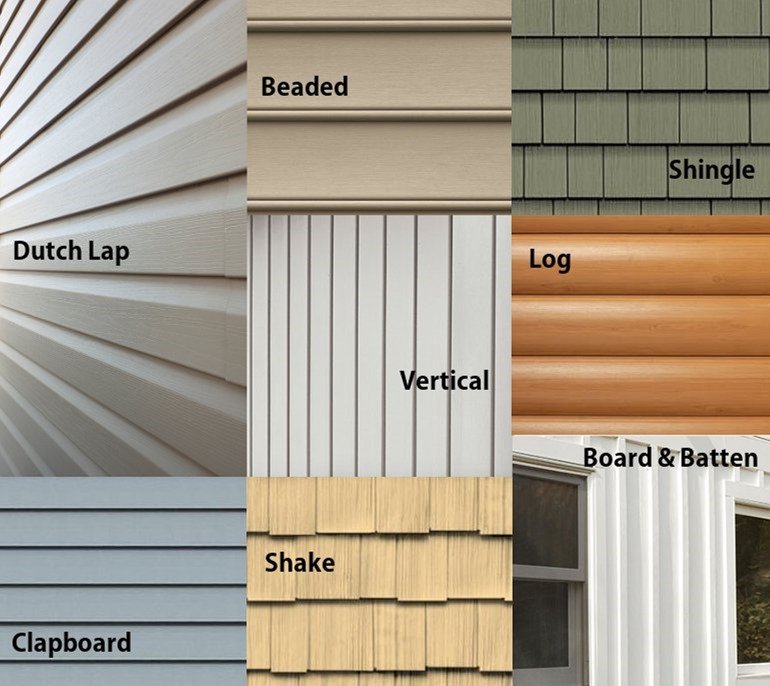 The most common home siding styles. Each style can be found in vinyl, engineered wood, cement board, and hardie board.
The most common home siding styles. Each style can be found in vinyl, engineered wood, cement board, and hardie board.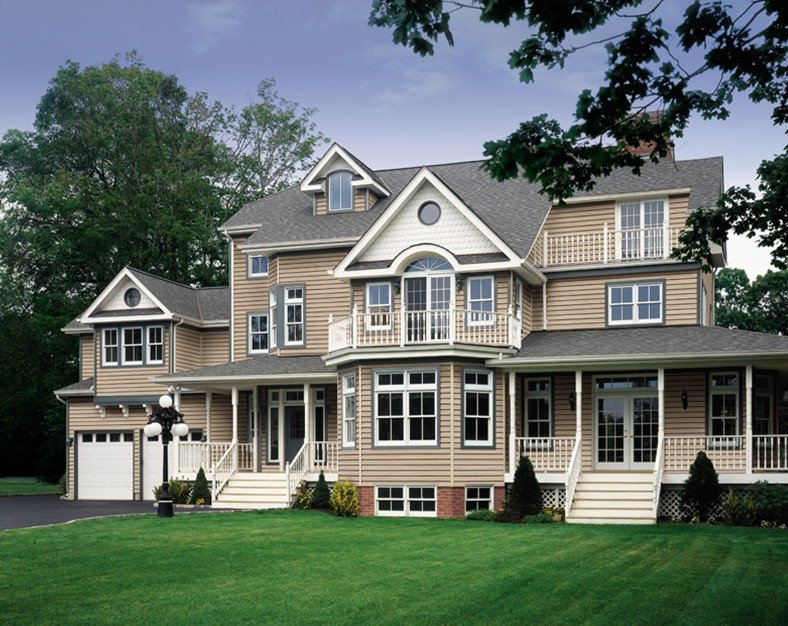 Certainteed Vinyl Clapboard Siding. Classic Look. Timeless beauty. Most popular house siding sold in the U.S.
Certainteed Vinyl Clapboard Siding. Classic Look. Timeless beauty. Most popular house siding sold in the U.S.Popular House Siding Types
The following are the most popular home siding types.
James Hardie Siding
James Hardie Siding, or sometimes just Hardie Board Siding, is a type of fiber cement siding, made from a mixture of cement, sand, and cellulose fibers. A dense, durable material that is designed to resist rot, insect damage, and fire. Holds up exceptionally well under extreme weather conditions includiing heavy rain, high winds, and even hurricanes.
 Hardie Board Siding, one of the most popular home sidings especially in coastal areas.
Hardie Board Siding, one of the most popular home sidings especially in coastal areas.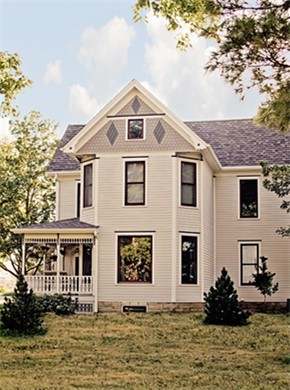 Hardie Plank siding is strong, durable, and comes in all the classic styles.
Hardie Plank siding is strong, durable, and comes in all the classic styles.Hardie Board siding comes in all the most popular profile types. Can be painted any color.
Hardie Board Siding is much heavier than vinyl siding and requires professional installation. It is more difficult to install and therefore a bit more expensive. There are several factors that must be included when setting up a budget for this type of siding material. How big your house is the first consideration, which will determine how much siding you will need. Second is how high your house is, is it a one story or two or more stories? If your house is more than one story high the contractor will have to erect scaffolding to reach the second + stories. This will certainly increase the amount of labor the installation contractor will have to charge you.
For More Information on Hardie Board Siding, Click Here.
Engineered Wood Siding
Engineered wood siding is wood strand technology that offers superior protection against hail, wind, moisture, fungal decay, and termites.
Looks just like wood. Only stronger and less maintenance. Great for coastal areas. Great for high winds.
LP Smart makes a premeum siding that offers superior protection against winds, rain, snow, and even hurrican force winds.
LP Smart Siding, an engineered wood product, is a best buy if you are looking for a weather-proof siding.
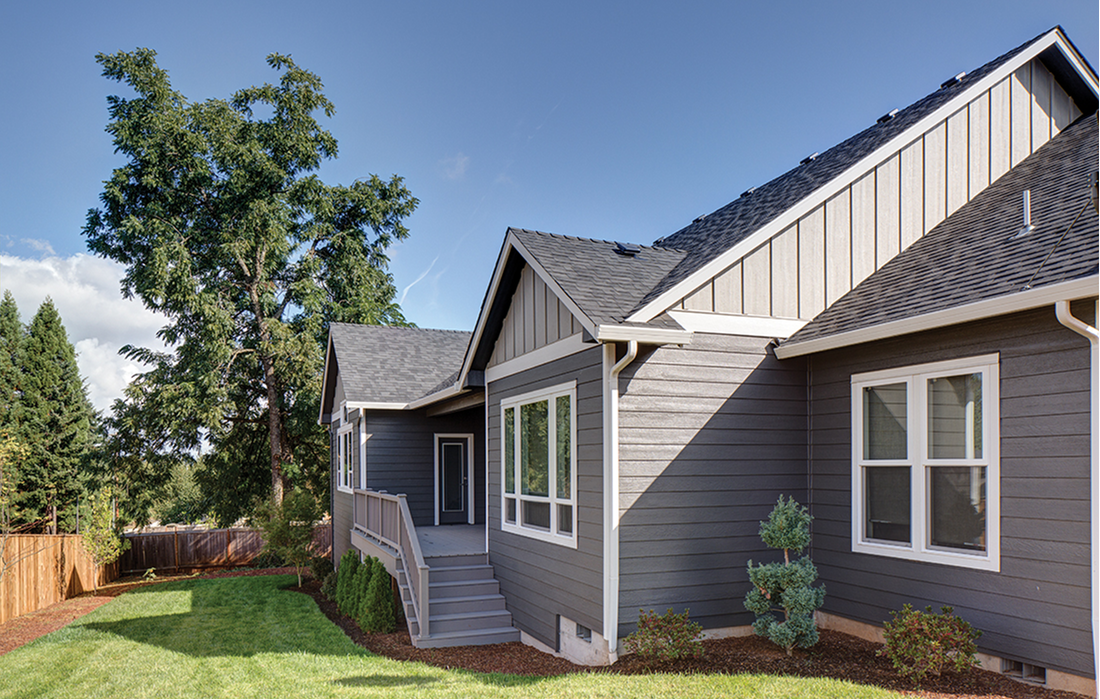 LP Fiber Cement Board Siding
LP Fiber Cement Board Siding Engineered Wood Clapboard Siding
Engineered Wood Clapboard Siding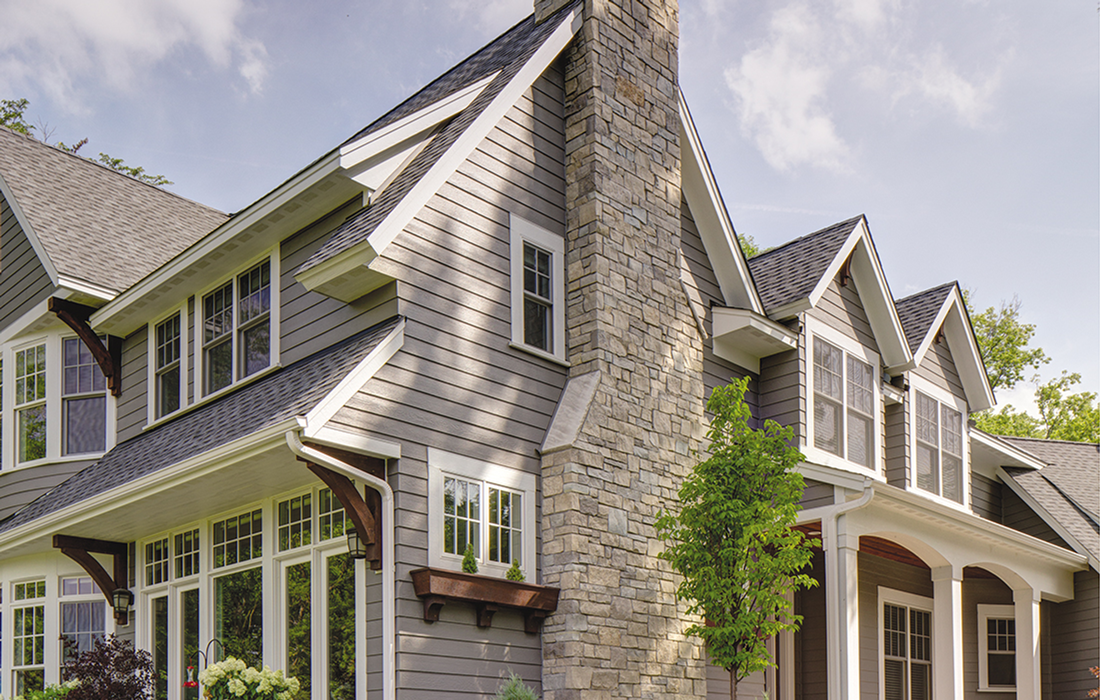 LP Engineered Wood Siding in Clapboard style.
LP Engineered Wood Siding in Clapboard style. LP Engineered Wood Siding can take hurricane-force winds.
LP Engineered Wood Siding can take hurricane-force winds.These siding products are designed to withstand high winds and prolonged exposure to moisture.
To see more information on LP Engineered Wood Siding, Click Here.
Cement Board Siding
Cement board siding is a composite material made from Portland cement, sand, and natural fibers like cellulose.
Also known as Fiber Cement Board, cement Fiber Siding, and Hardie Board Siding.
Significantly stronger than vinyl siding, providing a tough alternative suitable for harsh weather areas such as coastal areas. It resembles real wood siding but offers greater strength and durability.
Installed similarly to real wood siding, with long narrow boards nailed onto the house. It comes in rich textures, from deep wood grains to smooth finishes, providing a realistic look.

Priced several times higher than vinyl sidings. Cost, $3 to $15 per square installed.
For more information on Cement Board Siding Click Here
Vinyl Siding
# 1 Selling House Siding in America Vinyl Sidiing
 Certainteed Vinyl Siding. Most popular home siding in US.
Certainteed Vinyl Siding. Most popular home siding in US.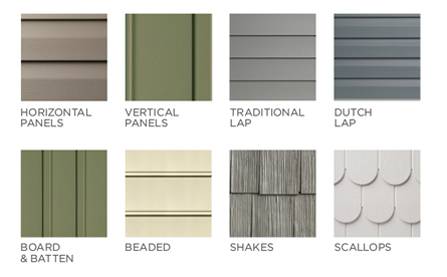 Vinyl Siding Styles. Comes in many colors and shades.
Vinyl Siding Styles. Comes in many colors and shades.Vinyl Siding is the most popular home siding material out there. It is consistantly the number one selling house siding on the market.
Vinyl siding is one of th most affordable and budget friendly siding options for home siding. It is tough, durable and very low maintenance. You never have to paint again!
It comes in a mutlitude of different colors and shades. It is easy to install and is very budget friendly.
It comes in assorted textures such as rough cedar grain or smooth finish Lap Board or Clapboard.
It is made of polyvinyl chloride (PVC), and requires no painting or caulkiing.
High end insulated vinyl siding has a polystyrene foam layer on the back side that can add up to R-6+ insulating value to your house. Saving you on energy costs for many years. Expect to pay 10-20% more for these insulated sidings.

Learn more about Vinyl Siding and how it outperforms most other home siding materials.
Click here to go to: Vinyl Siding Institute
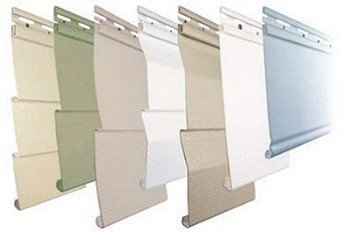 Vinyl Siding Styles. Sometimes called the profile.
Vinyl Siding Styles. Sometimes called the profile.To see more information on Clapboard Vinyl Siding Click Here.
Vinyl Siding Cost
What does vinyl siding cost? Vinyl Siding comes in several different price categories,
- economy grade,
- builder grade and,
- premium grades.
- It also comes in insulated and non-insulated panels.
When you compare different home siding materials, including not only the initial purchase price of the siding but also look at the long-term maintenance and repair expenses.
Keep in mind that while some materials may have a higher up-front cost, they could offer savings over many years due to their durability and low maintenance requirements.
For More Information on Vinyl Siding Cost, Click Here
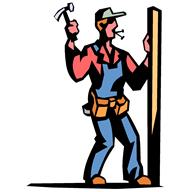
Tip: There are many things that go into getting a price to install new siding of any type. Look at some of the important items you must be familar with before you talk to the contractor about price.
For More Information on How To Buy Siding Click Here
Fiber Cement Siding
Fiber Cement Siding is strong, looks just like real wood, much less maintenance, more durable that wood or vinyl.
It can be molded to mimic wood, clapboard, and even shingles. It looks just like real wood, only more durable.
Fiber cement siding resists expanding and contracting with changes in humidity and temperatures. It is fire resistant; termite-proof and it won't rot.

Installing new Fiber cement siding on your home may be one of the best investments you can make. Prices of homes are going up dramatically everywhere, replacing the exterior siding may be the answer for you. A brand-new look for a fraction of the cost of building a new house.
A new siding will increase the value of your home, make it fresh and new looking again, and it will completely change the look of your house. It's like buying a new house without all the cost.
And you can install new siding on almost any house, even brick, stucco, or stone.
Cost runs in the $5 - $15 per square installed. $15,000 to $25,000 for average two story house.
It is a great choice for high wind areas and coastal regions, especially like Florida.
To see more information on Fiber Cement Siding/James hardie board Click Here
Vinyl Cedar Shake Siding
Vinyl Cedar Shake Siding is perfect for the natural look of the outdoors. Looks just like real cedar shakes but without all the maintenance and upkeep of real wood shakes. And it is much less expensive.
It comes in many assorted styles, textures, and colors. Doesn't rot or warp, and it resists termites and other insects.
 Cedar Shake House Siding.
Cedar Shake House Siding.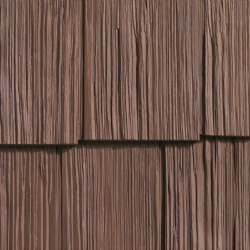 Beautiful Cedar Shake Siding in vinyl.
Beautiful Cedar Shake Siding in vinyl.For more information on Vinyl Cedar Shake Siding Click Here
What Is the Best Home Siding?
There is no best home siding because every house is different and location, neighborhood, weather, and budget must fit into the equation. What is best for someone who lives on the coast with intense winds and high moisture will be different from someone who is in the Mid-West suburbs where harsh winter winds and snow are a factor.
In general, vinyl siding is the most popular home siding in the U.S. Vinyl siding comes in many diverse types, styles, colors, patterns and will fit any budget from economy to premium brands.
People who need more durability may want to investigate concrete boards such as Hardie Board or engineered wood that are stronger than vinyl and can withstand strong, harsh weather and even hurricanes.
These kinds of problems must be addressed before the contractor can start the project.
 Water-Damaged Soffit
Water-Damaged Soffit